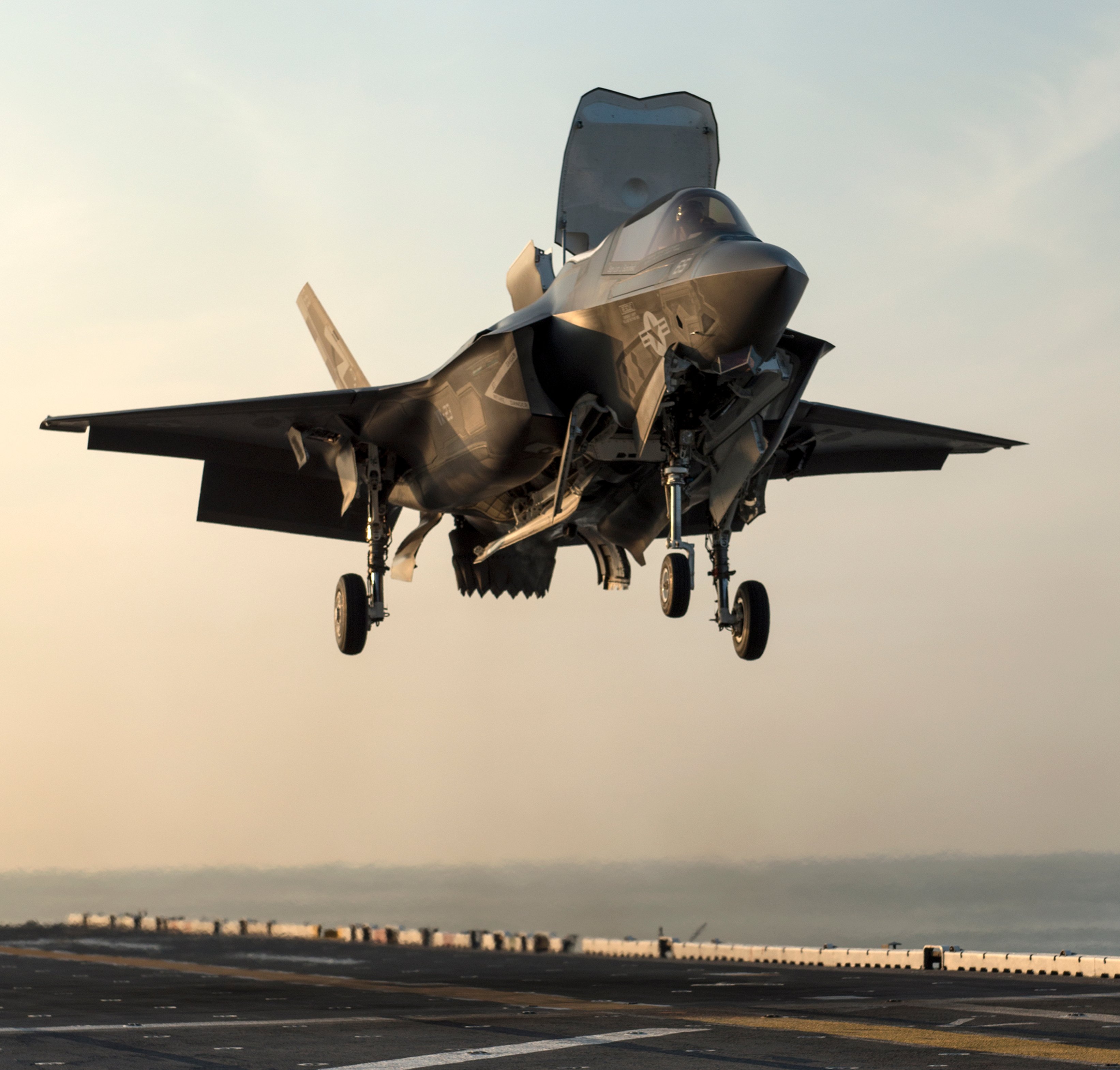
This post has been updated to include the F-35 software fielding timeline.
PENTAGON – The Marine Corps aviation community is keeping busy preparing to send its first F-35B Joint Strike Fighters to Japan in January 2017, ensuring the training and logistics pipelines are ready for global deployment of the new plane, the deputy commandant for aviation told USNI News.
The first F-35B squadron, Marine Fighter Attack Squadron (VMFA) 121, reached initial operational capability (IOC) in July and could, in an emergency, deploy overseas today.
“if a contingency arose, and I’ve got an IOC squadron, I could put six or more F-35Bs on the [USS] Wasp and sail into harm’s way and do the job and basically do what our nation needs to do with a fifth-generation aircraft from a seabase, the first one ever,” Lt. Gen. Jon Davis told USNI News in an interview.
VMFA-121 is the lone F-35B squadron for now, though the Marines intend to transition Marine Attack Squadron (VMA) 211, an AV-8B squadron, this fiscal year and Marine Fighter Attack Squadron (VMFA) 122, an F-18 Hornet squadron, in 2018.
As the F-35B fleet builds out, Davis said the Marines have to ensure sufficient readiness for all the squadrons. He said he needs to “make sure as we build up 211 we don’t degrade the capability of 121 from the maintenance perspective, make sure we keep our training solid. Right now we’re in good shape, we have a good plan to build out 211.”
“Keeping the procurement ramp solid is imperative to do that,” he said, and the procurement of spare parts may be the most important and most under-emphasized.
“I track every week where we are with [aircraft] modifications, where we are with procurement, where we are with their training,” he said.
“And right now, the only thing I would say is we need to keep our procurement of spares on track. If we don’t do that we could be in jeopardy. So that’s something we fight for all the time. The logistics part of this is not particularly sexy, but it is to me, it’s about making sure we have a platform we can sustain and generate the combat power we need.
“I remember when we brought the Harrier and the Hornet in as brand new airplanes, the AV-8B and the F-18, and we had lots of extra parts that we would use,” Davis continued.
“We had bond rooms at our bases, we would just pull parts off the shelves. We had very high readiness rates. We don’t have that construct with this airplane. I think we need to be more aggressive in providing all of the logistics and all of the spare parts we need for this airplane, because right now we’re not funded to be as successful as we should be, so were fighting for those funds to make sure we have full spares accounts.”
Davis said he would fight hard for more aggressive spares procurement because there is no doubt in his mind that the F-35Bs will be worked hard as soon as they land in their new home in Iwakuni.
“We’re determined to get the funding in place, the spares in place, so we have full spares accounts when we deploy,” he said.
“I can guarantee you, much like the V-22, the second it gets there it’s going to be in very very high demand for all the capabilities it brings.”
Iwakuni is also preparing to host the F-35s. Davis said the air station is in the midst of a major expansion and upgrade effort, installing new maintenance facilities and hangars, building additional runways, setting up F-35B flight simulators and more to create a “really phenomenal capability” for the Marines and their Japanese allies.
Davis said the aviation community is also ensuring that new plane production stays on track and that JSF software development continues at pace. The Marines’ planes currently have the 2B version of the software, though the Navy will not conduct its operational testing on the F-35C and declare initial operational capability until the 3F version is ready in 2017.
Davis said the 3F version will allow greater combat capability and allows the planes to fire many more types of weapons from external pylons, but he is still excited about the capability the 2B software brings.
“Right now the 2B configuration gives me a lot more than I’ve got in anything I’ve got in the legacy fleet,” he said.
“The guys who are flying the airplane are very pleased, would not go back to what they were flying previously.”
Despite extensive at-sea testing with the F-35B and the 2B software, the Marines have not operated the F-35s alongside the rest of the aviation combat element (ACE) aboard an amphibious ship. During operational testing in May aboard Wasp (LHD-1), Marines operated and maintained the F-35Bs from the ship and used the MV-22 Osprey simultaneously on a few. But the rest of the ACE – including CH-53E heavy lift and AH-1Z/W Super Cobra light attack helicopters – was not on the ship.
Davis said full ACE integration was never meant to be a part of operational testing. Instead, the first 10 planes in VMFA-121 will move to Marine Corps Air Station Iwakuni in Japan in January 2017, followed by six more planes by that June. Wasp will head to Japan in early 2018, so ACE integration efforts will take place ahead of the F-35B’s first float in 2018.





